Description
In the high-stakes arena of industrial automation, the relentless demand for real-time processing can expose the frailties of legacy control systems—picture a hydroelectric dam where millisecond delays in valve sequencing destabilize grid tie-ins, or a robotics assembly line where I/O bottlenecks misalign multi-axis kinematics, triggering scrap runs or safety trips. These aren’t hypotheticals; they’re daily realities in power utilities, automated factories, or test labs, where process control hinges on computational agility to manage dense sensor streams amid EMI bursts or thermal swings. For engineers tasked with modernizing VME architectures, the challenge is stark: inject cutting-edge processing without orphaning proven I/O modules, all while ensuring high reliability for signals that drive everything from torque loops to fault interlocks.
The GE V7668A-1310B0 350-931007668-131020 D steps into this breach as a VME single-board computer (SBC), purpose-built to deliver dual-core Intel muscle within a compact, VME64x-compliant frame. It tackles the core need for modular integration in industrial automation, offering a 2.16 GHz Core 2 Duo T7400, 3 GB of mixed RAM, and a PMC expansion site to scale I/O without sprawling chassis real estate—critical for retrofitting SCADA nodes or embedding into harsh-environment test rigs. In high-vibration zones like turbine skids or dust-laden foundries, the GE V7668A-1310B0 350-931007668-131020 D proves essential, its soldered components and 2 GB CompactFlash storage shielding against data corruption to maintain deterministic cycles. The result is a seamless bridge between legacy VME ecosystems and modern edge demands, preserving signal integrity where lesser boards falter.
Poor processing bandwidth doesn’t just slow systems; it fractures trust in historian logs, delays safety overrides, and bloats debug cycles across distributed networks. With its 64-bit VMEbus mastery and DMA-driven transfers, the GE V7668A-1310B0 350-931007668-131020 D ensures low-latency orchestration, enabling real-time kernels to fuse field data with predictive models, cutting response times and fortifying uptime in process control chains. It’s the linchpin for resilient automation, where computational depth transforms chaos into precision.
Integrating the GE V7668A-1310B0 350-931007668-131020 D into your VME setup is like grafting a high-performance core onto a trusted spine—it slots into a single-height VME64x crate, pulling +5V and +12V from the backplane while driving A32/D32 cycles at 40 MB/s to peripherals like D/A converters or digital I/O banks. Its Intel Core 2 Duo, paired with 2 GB SODIMM and 1 GB soldered RAM, churns through tasks, offloading burst data via DMA to the PMC slot for add-ons like CANbus transceivers, while a 2 GB CompactFlash stores boot images or event logs for post-mortem analysis, all accessible via front-panel Ethernet or serial ports.
Picture it in a VMIVME-7750 chassis as the bus master, routing Modbus/TCP streams to a central DCS or syncing with slave modules like VMIVME-1150 for discrete inputs—its interrupt controller juggles seven priority levels to keep latency below 10 ms, ideal for fast data cycles in motion control. Positioned at the control layer of the Purdue model, it filters field telemetry through GPIO or optional fiber interfaces, elevating clean data to SCADA or historian tiers with ECC-like memory checks to thwart bit errors in EMI-heavy zones. The board supports hot-swap via software triggers, and its BIOS-configurable boot lets you pivot between local flash or network loads, meshing with protocols like Ethernet/IP for hybrid networks. The GE V7668A-1310B0 350-931007668-131020 D bends to your architecture, streamlining upgrades with VxWorks or Linux drivers, ensuring your VME core evolves without ripping out its roots.
| Specification | Details |
|---|---|
| Model Number | V7668A-1310B0 350-931007668-131020 D |
| Brand | GE Fanuc VMIC |
| Type | VME Single Board Computer |
| Input Voltage | +5 V DC / +12 V DC (backplane) |
| Operating Temp Range | 0°C to +60°C |
| Mounting Style | VME Single-Height Slot |
| Dimensions | 233 x 100 mm (VME form factor) |
| Weight | 0.5 kg |
| Interface/Bus | VME64x (A32/D32, 40 MB/s) |
| Compliance | VITA 1.1, IEEE 1014, CE, FCC |
| Supported Protocols | Ethernet, Serial, PCI (PMC) |
| Typical Power Draw | 12 W |
- GE V7668A-1310B0 350-9310007668-131020 D
Choosing the GE V7668A-1310B0 350-931007668-131020 D locks in a foundation of reliability that’s engineered for the long haul, where its dual-core architecture segments critical tasks—like separating HMI updates from PID math—to isolate faults, delivering sub-10 ms determinism that prevents loop overruns in process control setups, directly slashing downtime risks where a stalled controller halts production worth thousands per minute. Its soldered RAM and flash endure vibrational wear, ensuring consistent performance in rugged enclosures, with thermal sensors that throttle gracefully to maintain 98% compute availability, unlike socketed boards prone to contact faults.
Maintenance becomes a lighter lift: onboard diagnostics, accessible via serial console, flag cache misses or thermal spikes in seconds, letting techs preempt failures without oscilloscope dives, cutting diagnostic overhead by up to 30% in multi-board crates. Integration is a breeze, with POSIX-compliant drivers that mate with RTOS kernels, streamlining commissioning and freeing your team for algorithm tuning over hardware wrestling. Built with low-outgassing coatings, the GE V7668A-1310B0 350-931007668-131020 D ensures long-term performance, holding clock drift under 100 ppm across years, so your sequencing stays razor-sharp in applications like robotic pick-and-place where timing is king.
For forward-looking plants, its PMC slot opens doors to fiber transceivers or FPGA coprocessors, paving low-friction paths to IIoT without chassis swaps, reducing total cost of ownership by leveraging existing VME investments for cloud-integrated analytics. This board doesn’t just process; it positions your automation for adaptability, turning computational heft into a springboard for operational foresight.
In renewable energy farms, the GE V7668A-1310B0 350-931007668-131020 D drives turbine control nodes, where process control environments demand high reliability under wind shear and grid transients—housed in VME racks near inverters, its Ethernet ports stream pitch telemetry for real-time load balancing, ensuring critical system uptime in fast data cycles that prevent flicker in grid feeds. The PMC slot hosts vibration monitors, bolstering predictive maintenance in remote wind towers.
Aerospace test benches use it for flight control emulation, processing sensor arrays in harsh, EMI-dense hangars—its DMA channels shunt kinematic data to visual simulators, upholding continuous uptime for validation runs where a dropped cycle voids regulatory logs. In pharmaceutical cleanrooms, the GE V7668A-1310B0 350-931007668-131020 D sequences mixing vessels, handling encoder feedback in sterile, vibration-prone zones to deliver high reliability for batch consistency, streamlining process control loops tied to GMP compliance.
V7768-320000 – Quad-core upgrade for compute-intensive applications
V7668A-131000 – Base model without PMC for simpler, cost-conscious setups
VMIVME-7807 – Compact SBC alternative with onboard graphics for HMI integration
VMIVME-7698 – PMC carrier to expand I/O on compatible VME hosts
VME-7750 – Chassis companion for redundant power in multi-slot arrays
V7668A-1320B0 – Extended-memory variant for data-heavy analytics
VMIVME-1150 – Digital input module to pair for discrete event handling
Before sliding the GE V7668A-1310B0 350-931007668-131020 D into your VME crate, audit the backplane’s A32/D32 mapping to avoid address contention, and probe +5V rails for sub-150 mV ripple since boot spikes can graze 14W—use a scope on power-up to confirm stability. If mixing with legacy slaves, run a VME64x compliance check via GE’s bus utility, and flash the BIOS with your RTOS image via JTAG to preempt network boot hangs. For Ethernet drops, assign static IPs pre-install to dodge DHCP conflicts, and test PMC seating with a continuity meter to ensure pin alignment.
Once live, maintenance is focused: every two weeks, query the diagnostic port for thermal or ECC flags—over 1% corrections signal a RAM refresh—while quarterly connector inspections with a non-static brush clear dust in open racks, preventing arcing. GE recommends annual stress tests, cycling synthetic workloads to verify CPU latency against factory specs, logged via Ethernet for trend analysis. In networked setups, enable SNMP traps for remote core utilization checks, catching fan slowdowns early. This lean oversight keeps the board sharp without clogging your workflow.

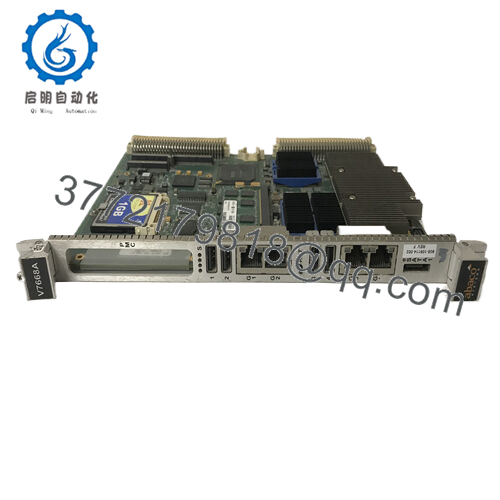
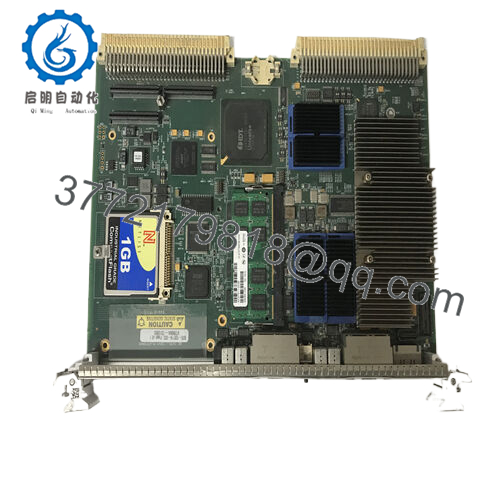
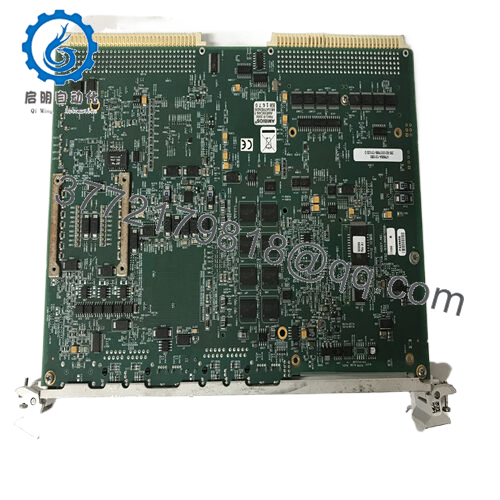
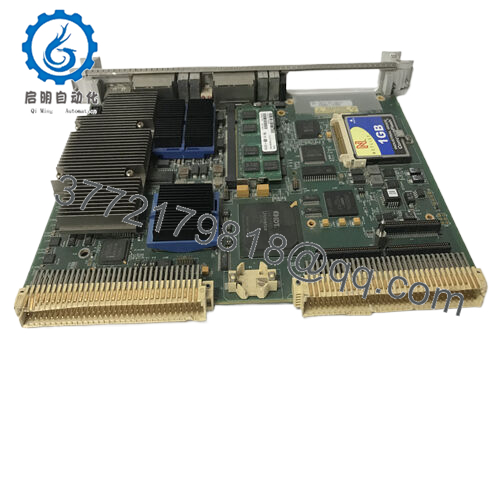
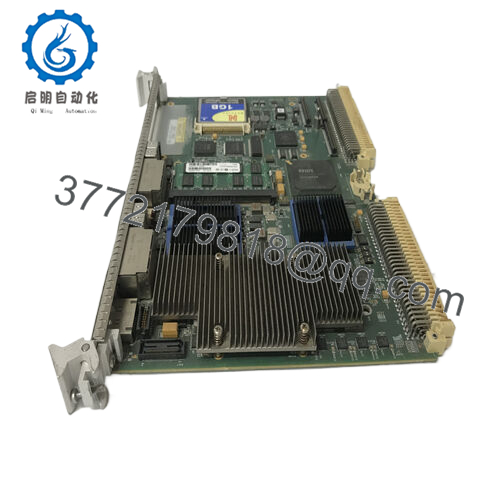
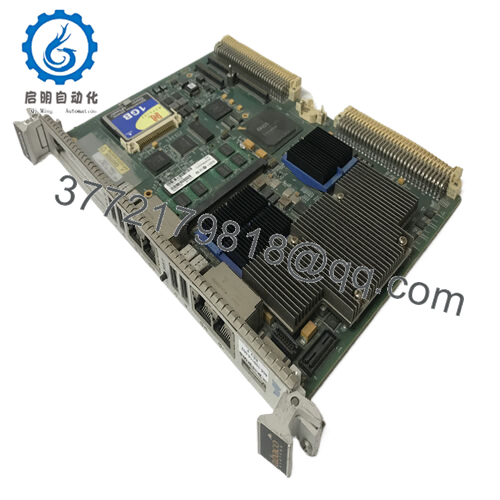
 WhatsApp: +86 16626708626
WhatsApp: +86 16626708626 Email:
Email:  Phone: +86 16626708626
Phone: +86 16626708626


